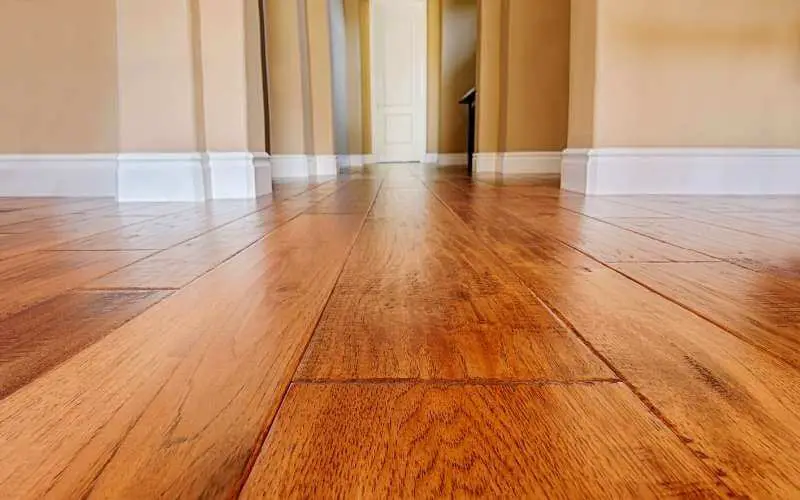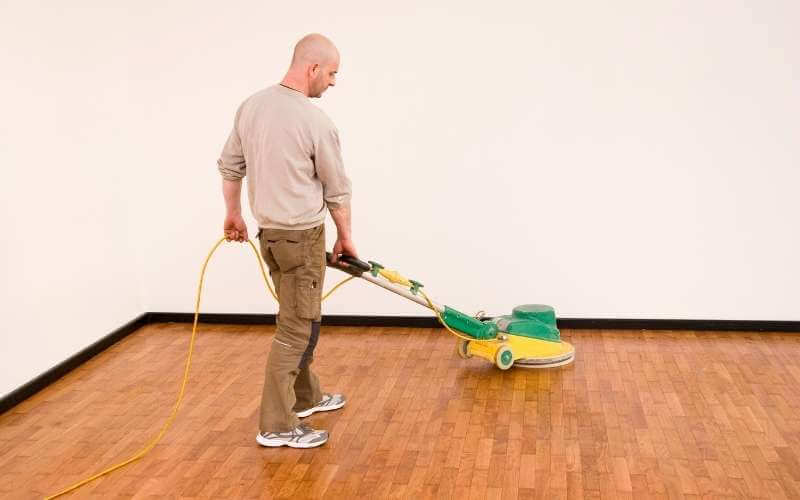Polyurethane is one of the most durable finishes you can apply to your hardwood. Other finishes include varnish, wax, penetrating oil, aluminum oxide, etc.
How long to wait between coats of polyurethane on hardwood floors. For oil-based polyurethane, the necessary time to wait between coats is four hours, while water-based polyurethane requires less time as they dry faster.
Polyurethane is known to add another layer of protection to your floors, extending the life of the floors, usually for 3-5 years.
Doing this every 4-6 years will eliminate the need to refinish your floors again fully. Don’t procrastinate until it becomes too late. Users always recommend polyurethane over varnish for hardwood floors.
Read: How often should you refinish hardwood floor (Find out)
Things to Consider when Choosing the Right Polyurethane for your Hardwood Floors
Table of Contents
There are two types of polyurethane finish, oil-based poly, and water-based poly. Oil-based paint is excellent if you require rich glossy color.
Water-based paint will be ideal if you want the opposite: a natural appearance devoid of the shiny look.
Oil-based polyurethane contains higher levels of toxic compounds. Water-based polys are more expensive but dry quickly and do not affect the wood’s color.
Oil-based polys are famous for their durability; they give long-lasting protection to hardwood floors against heat and moisture.
If you’re in the market for a fast-drying surface that can be recoated without compromising the floor’s natural color, water-based polys are recommended.
This article will attempt to examine how long we have to wait between coats of polyurethane on hardwood floors.
How Many Coats of Polyurethane is needed
When using oil-based polyurethane, much coating is usually not required. Three times or four at the most is generally sufficient. On the other hand, water-based polyurethane might require more coats on hardwood surfaces.
Water-based polyurethanes are much lighter than oil-based polyurethanes, which makes them need more coatings.
Water-based polyurethanes usually require four to five layers. The total number of coats is typically tied to the activities associated with the particular surface.
Different Methods of Polyurethane Application
There are different methods of applying polyurethane, such as spray, brush, et cetera.
Brush
This is highly effective for large and flat hardwood surfaces because of the unique nature of the brush, which allows for large quantities to be scooped with ease.
Another essential factor to consider is the sticky nature of polyurethane.
Spray
This is most effective for uneven hardwood floors or surfaces. The spray method is usually the most common among the various application techniques.
They also require more coatings as they are generally lighter. An excellent factor to consider is the tendency to drip, thereby leaving a mess.
Read: How to fix uneven polyurethane finish on wood floor
How to Apply Polyurethane
Before applying polyurethane, you must clean the surface and ensure it is free of dirt or debris.
After that, you use the sealant and leave it for twenty-four hours to be completely dry. After carrying out these activities, the application of polyurethane can commence.
We’ll be discussing the application of oil-based polyurethane in this article.
To apply the first coat
- Get a soft brush
- Apply the oil-based polyurethane evenly in straight lines from top to bottom
- Minimum of 2-3 coatings should be sufficient for complete protection.
You’re required to wait for a minimum of four hours or more between each coating to ensure it is properly dried.
Related: How to get rid of polyurethane smellf from wood floor
Conclusion
How long to wait between coats of polyurethane on hardwood floors is dependent on the type of polyurethane being used. For oil-based polyurethane, the necessary time to wait between coats is four hours, while water-based polyurethane requires less time as they dry faster.
It is safe to imply that if you don’t have the patience, you can stick with the water-based polyurethane.

